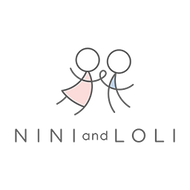Doona Car Seat Safety Rating: What Parents Need to Know
The Doona car seat combines the functionalities of an infant car seat and a stroller, making it popular among parents. Its unique design simplifies on-the-go travel in urban settings.
Safety is a critical consideration for parents. This article examines the Doona car seat's safety ratings, installation ease, and real-world usability to help parents make informed choices.
[TOC]
Overview of the Doona Car Seat
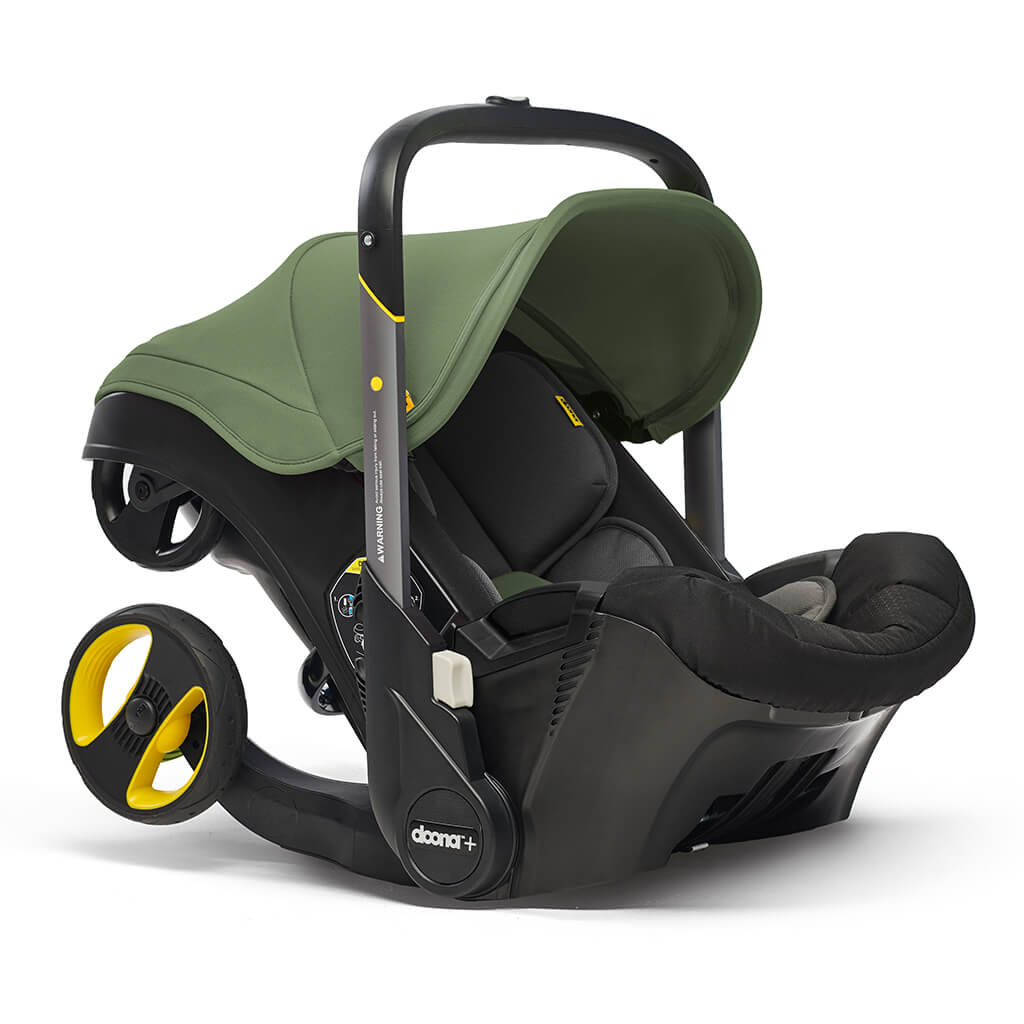
The Doona car seat is an innovative solution designed for parents seeking convenience and safety for their infants. This section delves into its unique design features, the history behind its creation, and its popularity among both celebrities and everyday parents.
Unique Design Features
The Doona car seat stands out in the market due to its multifunctionality. It is crafted as a 2-in-1 product that integrates both a car seat and a stroller, making it particularly adept for urban families. Key features include:
- Integrated Wheels: The most distinctive feature is its retractable wheels, allowing easy transition from car seat to stroller with a simple push of a button.
- Compact Design: The compact nature of the Doona makes it easy to maneuver through tight spaces, which is particularly beneficial for city dwellers.
- Lightweight Construction: Despite being sturdily built, the Doona is relatively lightweight, providing caregivers with manageable handling.
History and Inspiration
The development of the Doona was sparked by the personal experiences of its creator, Yoav Mazar. Confronted with the challenges of navigating urban environments with a baby, he sought to create a solution that would simplify the process for parents. His vision led to:
- Combining Functionality: The idea was to merge a car seat with an immediate stroller solution, addressing the needs of parents constantly on the go.
- Focus on Safety: Safety was paramount in the design process, ensuring that the product not only facilitates travel but protects infants effectively.
Popularity Among Celebrities and Parents
Since its launch, the Doona car seat has garnered significant attention from both the public and media, contributing to its popularity.
- Celebrity Endorsements: The product has been featured by numerous celebrities, which has created a sense of trust and desirability among new parents looking to emulate their favorite influencers.
- Positive Parent Feedback: Many parents praise the Doona for its practicality and ease of use, particularly in urban settings where space and convenience are essential.
Evaluating the safety ratings of the Doona car seat is crucial for parents considering this innovative product. Below is an in-depth analysis of its safety performance.
Safety Ratings of the Doona Car Seat
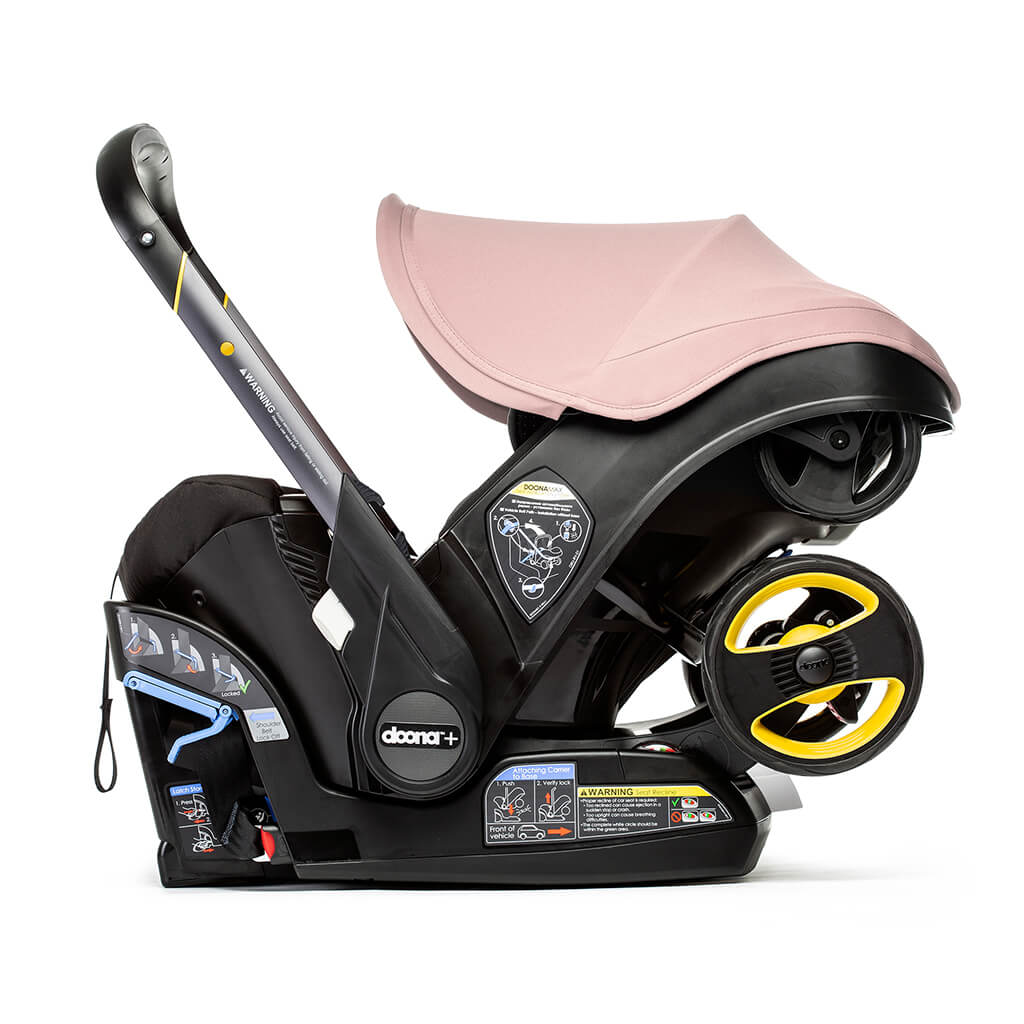
Federal Safety Standards Compliance
The Doona car seat adheres to federal safety standards, which are established to ensure a minimum level of protection for infants.
Compliance with these regulations indicates that the Doona meets essential criteria for safety during travel. However, adherence to federal guidelines alone does not guarantee top-tier performance in real-world crash scenarios.
Key Findings in Crash Tests
Crash test results reveal important insights regarding the safety performance of the Doona car seat.
These evaluations assess various factors, including the forces experienced during an impact and the likelihood of injury to infants secured in the seat.
G-Force Analysis
During crash testing, the Doona car seat exhibited higher than average g-forces. This finding indicates that greater forces act on the occupant in the event of a collision. Ideally, lower g-forces are favored as they signify less severe impacts affecting the child’s body.
The results from these tests raise concerns about the level of protection the seat provides during an accident.
Head Injury Criterion (HIC) Scores
The Head Injury Criterion (HIC) is another critical measurement used to gauge the risk of head injury associated with a car seat during a crash.
The Doona's HIC scores were found to be higher compared to many competing models.
A lower HIC score is indicative of a reduced likelihood of head injury, reaffirming the need for parents to consider alternative car seat options that deliver superior protection in this regard.
Comparative Analysis with Other Car Seats
Understanding how the Doona car seat measures up against other infant car seats is essential for parents seeking the best options for safety and usability.
Below is an analysis that evaluates its performance alongside leading brands and alternative models.
Performance Against Leading Brands
When assessed against top competitors in the infant car seat category, the Doona exhibits distinct strengths and weaknesses. Many brands focus heavily on crash performance, often outperforming the Doona in key safety metrics.
- Crash Test Ratings: Leading brands such as the Chicco KeyFit and UPPAbaby MESA consistently receive higher scores in safety evaluations. These seats demonstrate lower G-forces and better head injury criteria (HIC) results, reflecting superior crash protection for infants.
- User-Friendly Installation: Brands like Britax and Peg Perego offer installation systems that are praised for their ease of use. Many parents find these brands excel with LATCH and seat belt installation, ensuring a more straightforward setup compared to the Doona.
- Safety Features: Leading competitors often integrate advanced safety features, such as anti-rebound bars and load legs, enhancing stability during travel. While the Doona includes an anti-rebound bar, other models often provide more comprehensive solutions.
Analysis of Alternative Car Seats
Alternative car seats bring diverse functionalities and safety measures that cater to different parenting needs. In comparison to the Doona, these options can offer compelling reasons for selection based on crash safety ratings, installation methods, and additional features.
- Convertible Car Seats: Convertibles like the Graco Extend2Fit are designed for extended use, transitioning from rear-facing to forward-facing modes. These seats provide longer-term usability, which could be more economically efficient for growing families.
- Compact Car Seats: For families with smaller vehicles, brands such as Safety 1st Design on the Go cater to tight spaces while still emphasizing safety ratings. These car seats can fit more snugly in smaller back seats than the bulkier Doona.
- Travel Systems: Systems like the Baby Jogger City Go combine advanced safety features with modular functionality, allowing for ease of transition between car and stroller modes similar to the Doona but often with enhanced safety ratings.
Ease of Installation
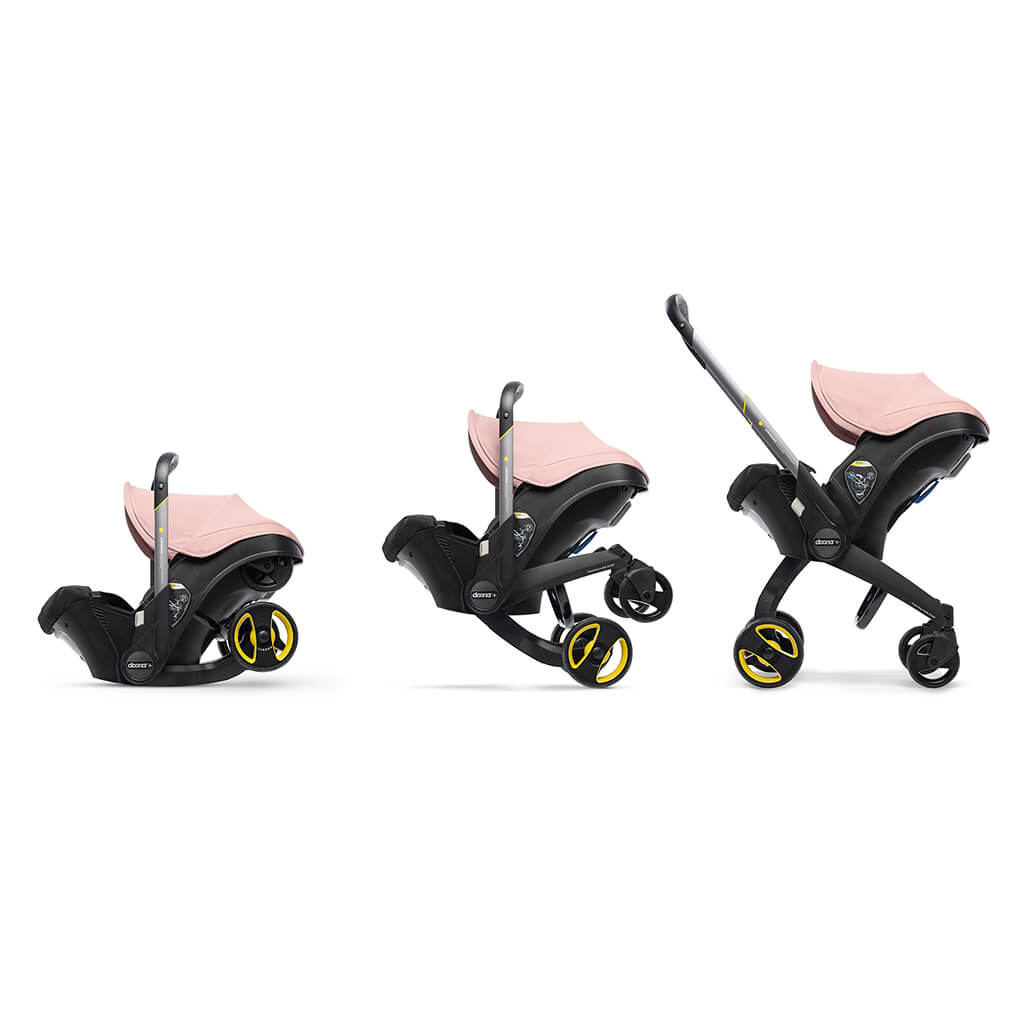
The ease of installation is a crucial factor for the Doona car seat, as proper use significantly impacts safety performance. Evaluating how well it integrates into different vehicles highlights its strengths and considerations.
LATCH Installation Performance
The Doona car seat supports the LATCH system, ensuring a firmer and safer connection to the vehicle. However, its performance in this area has received mixed reviews.
Strengths and Weaknesses
- Strengths:
- Generally straightforward setup when following correct guidelines.
- Ensures a secure fit that minimizes movement during travel.
- Weaknesses:
- Scored below average in ease of use compared to other LATCH-equipped seats.
- Lacks features such as an anti-rebound bar or load leg, which enhance safety during installation.
Comparison with Other LATCH Systems
Compared to other car seats utilizing LATCH, the Doona’s installation process may feel less intuitive for some users.
Many competing models offer additional integration features that simplify the installation and provide extra support.
This aspect can lead to a more favorable experience for parents who prioritize simplicity in setup.
Vehicle Seat Belt Installation
The Doona can also be installed using a vehicle's seat belt, offering flexibility for caregivers. This method, while effective, has its challenges and nuances.
Installation Process and Challenges
Installing the Doona with a seat belt involves a specific process that can be tricky. Users have reported the need for careful attention to ensure correct positioning. If not installed properly, the safety of the child could be compromised.
Lock-Off Mechanism Usability
The lock-off mechanism designed for seat belt installation has received mixed feedback. Some users find it finicky and not as straightforward as other models, which can lead to incorrect setups. Proper understanding of this feature is essential for ensuring maximum safety during use.
Baseless Installation
One of the standout features of the Doona is its capability to be installed without a base. This option appeals particularly to urban parents who utilize rideshares or taxis frequently.
Practicality for Urban Parents
The baseless installation method is beneficial for parents on the go. It allows for quick transitions from car to stroller, especially in tight city situations where space may be limited.
The adaptability of the Doona shines in these instances, simplifying parental routines.
Challenges in Baseless Setup
Though convenient, the baseless setup poses challenges as well. Some caregivers, particularly petite individuals, may find it cumbersome to lift and secure the seat correctly without the added support of a base.
Mastering this installation method may require practice and patience.
Key Safety Features
The Doona car seat is equipped with several safety features designed to protect infants during travel. These features enhance the overall safety profile, providing reassurance to parents while ensuring maximum protection for their little ones.
Anti-Rebound Bar Functionality
The anti-rebound bar is an essential component of the Doona car seat's safety features.
This bar is strategically placed in the rear of the seat and serves multiple purposes. It helps to minimize the movement of the car seat during a collision, particularly in rear-end accidents.
By reducing the forward motion, the anti-rebound bar aids in stabilizing the infant's position, preventing excessive movement that could lead to injury.
This feature plays a critical role in enhancing the car seat's effectiveness during a crash. In studies, seats equipped with anti-rebound bars have shown improved outcomes in safety tests.
The added support provided helps to absorb and distribute forces exerted during an impact, protecting the child from potential harm.
Five-Point Harness System Importance
The Doona car seat utilizes a five-point harness system, a standard safety feature of modern infant car seats.
This system is designed to secure the child in multiple points: over the shoulders, at the hips, and between the legs.
The five-point harness ensures that the forces during a crash are evenly distributed across the child's body, which significantly reduces the risk of injury.
-
Enhanced Security
The five-point harness helps to keep the infant securely in place, preventing any abrupt movements that could lead to injury. The snug fit allows for safe positioning, making it difficult for young children to unbuckle themselves.
-
Adjustability
This harness system is adjustable, accommodating various sizes as the child grows. Proper adjustment ensures that the harness fits snugly without causing discomfort, providing both safety and comfort for the infant.
Infant Head Support and Protection
Maintaining proper head support is crucial for infants, particularly in car seats. The Doona car seat includes specialized head support designed to cradle and protect the child's head during travel.
It provides additional cushioning and support to prevent any potential head injuries, especially in the event of sudden stops or collisions.
This head support is integral to ensuring that infants maintain a safe posture while seated. Proper alignment of the head and neck can reduce the risk of injury and offer peace of mind to parents during travel.
The design takes into consideration the unique needs of infants, making sure they are adequately supported in a safe and secure environment.
Real-world usability plays a crucial role in determining how well a car seat meets the needs of parents and caregivers in their daily lives.
The Doona car seat is designed with practicality in mind, particularly for those navigating busy urban environments.
Real-World Usability for Parents
Convenience for Urban Living
The Doona car seat's innovative design provides significant convenience for parents living in urban areas.
With the fast-paced lifestyle of city dwellers, the ability to transition seamlessly between a car seat and a stroller is invaluable.
The integrated wheels allow parents to move from the car to the sidewalk effortlessly, saving time and reducing the hassle typically associated with managing separate pieces of equipment.
Many families appreciate how the Doona eliminates the need to carry multiple items when traveling.
This is particularly beneficial for those using public transportation or rideshare services, as securing an infant can be a daunting task.
The lightweight nature, despite being bulkier than some alternatives, offers a degree of portability that aligns well with urban living needs.
Travel-Friendly Design
In addition to facilitating urban mobility, the Doona car seat is designed to cater to travel demands. Its compact, all-in-one structure is not just user-friendly; it also simplifies travel logistics for families on the go.
FAA Approval and Air Travel
The Doona car seat is FAA-approved, making it suitable for air travel. Parents report that it is a significant advantage when navigating through airports.
Able to roll down aisles easily, the seat allows for a smoother experience boarding and deplaning, reducing stress in hectic travel scenarios.
This travel-friendly aspect encourages parents to choose the Doona for vacation trips or long-distance journeys.
The versatile functionality means that it can be utilized in various settings without the need for complex adjustments or separate gear.
Maneuverability in Tight Spaces
Another commendable feature is the Doona's maneuverability in tight spaces. Urban environments often involve narrow sidewalks, crowded stores, and small apartments, where storage space is limited.
The Doona's design allows it to fit through these environments smoothly.
Its retractable wheels make it easy to navigate busy streets or cramped cafes without disruption.
Parents often highlight how this capability enhances their day-to-day activities and errands, resulting in a stress-free experience while running multiple tasks.
Parental Reviews and Feedback
Parental reviews and feedback play a vital role in evaluating the Doona car seat's overall performance and safety aspects.
Insights from real-life users offer a glimpse into the everyday usability and satisfaction level associated with this product.
Online Reviews and Ratings
Parents often turn to various online platforms to share their experiences with the Doona car seat. Ratings vary considerably, reflecting a mix of positive and critical feedback.
Users commonly post reviews on parenting forums, retail websites, and social media groups dedicated to baby gear.
The overall sentiment indicates strong support for the product's ergonomic design but mixed feelings regarding its crash safety ratings.
Common Praises and Complaints
While many parents appreciate the Doona car seat, others express concerns. There are certain aspects that frequently appear in reviews, highlighting both the advantages and challenges of this infant car seat.
Positive Aspects Highlighted by Parents
- Convenience of Design: Parents rave about the convenience of having a car seat that also functions as a stroller. This dual functionality significantly reduces the hassle of switching between two separate items.
- Ease of Mobility: Many reviews mention the Doona's lightweight nature, making it easy to maneuver in tight spaces, such as urban environments and crowded places.
- Travel-Friendly: The Doona car seat’s FAA approval is a frequent point of praise among parents who travel, as it simplifies the process of moving through airports.
- Stylish Appearance: Aesthetically, many parents find the Doona appealing. Its modern design and color options resonate well with style-conscious families.
Frequent Issues Reported
- Crash Test Concerns: A significant number of parents express concern regarding the safety ratings, specifically its performance in crash tests. Users often reference the lower ranking compared to other models.
- Weight and Bulkiness: Several reviews note that the Doona can be heavy, making it cumbersome for some caregivers, particularly as infants grow.
- Installation Challenges: Common feedback indicates difficulties during installation, especially with the LATCH system. Some users report that the installation process requires a more thorough understanding to achieve optimal security.
- Limited Storage: Parents frequently mention the lack of storage space when using the Doona in stroller mode. This limitation can lead to additional challenges when carrying diaper bags or shopping items.
The Doona car seat's dual functionality as both an infant car seat and a stroller provides significant convenience for parents. Its innovative design allows for easy transitions between car and stroller modes.
The Doona Car Seat as a Stroller
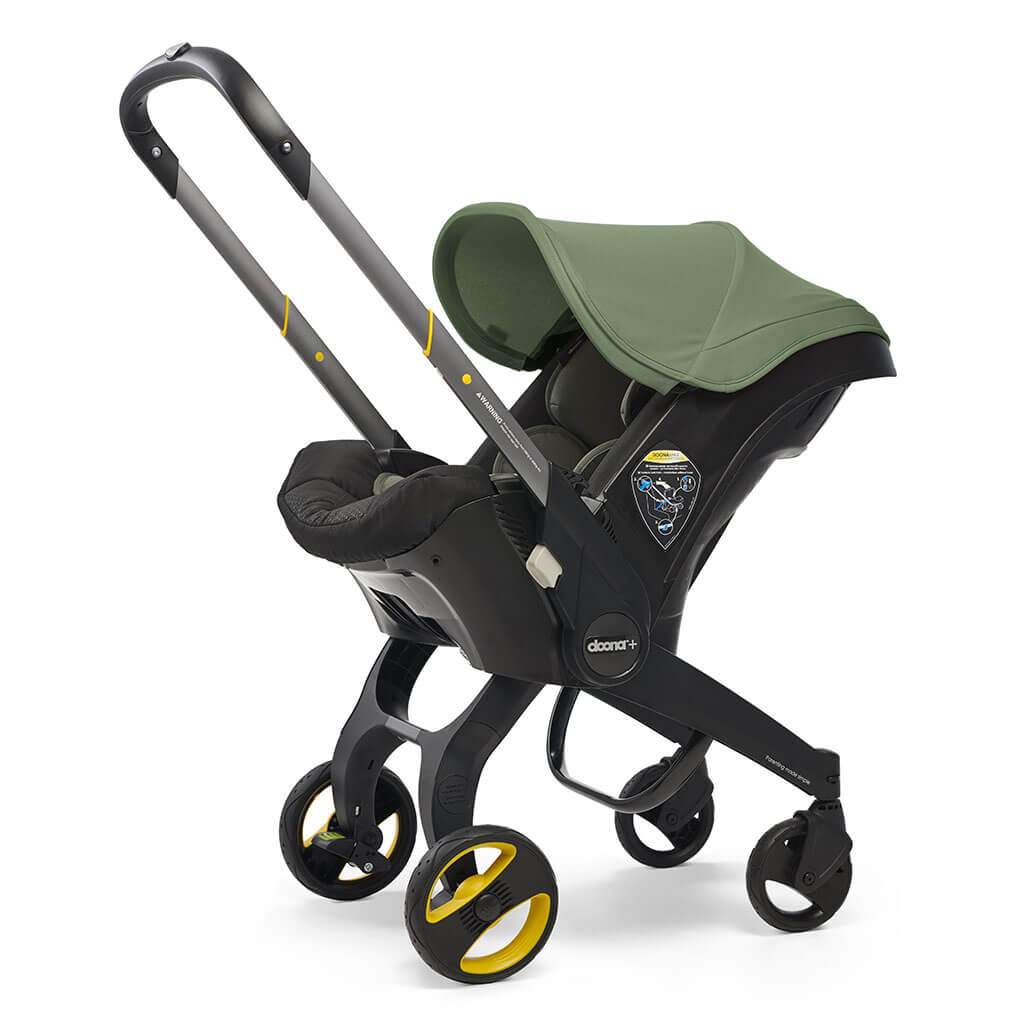
Transition Ease from Car Seat to Stroller
One of the standout features of the Doona car seat is the seamless transition from car seat to stroller.
Parents can effortlessly switch between the two modes without having to remove the child. This design simplifies outings, especially in busy urban environments.
The mechanism allows the user to pull the wheels out and secure the seat in a standing position.
This quick transition is particularly beneficial for parents who need to navigate tight spaces, such as sidewalks, stores, and public transport.
With just one hand, the Doona transforms, ensuring that caregivers can manage other tasks simultaneously.
Daily Use Scenarios
Rideshare and Taxi Use
The Doona car seat excels in scenarios involving rideshare services and taxis. Its unique feature allowing for baseless installation makes it a reliable choice when traveling without a dedicated vehicle.
Parents can easily carry the seat into a vehicle and install it securely using the seatbelt system.
When using rideshare apps, the ability to convert the car seat into a stroller immediately upon exiting the vehicle eliminates the need for additional equipment.
This feature is especially valuable for parents needing to make multiple stops or those who are navigating busy city streets.
Shopping and Errands
Shopping trips and running errands become significantly easier with the Doona car seat.
The stroller functionality means that parents can move efficiently through stores without the hassle of managing a separate stroller.
The compact design allows it to fit in tight aisles, making maneuverability less of a challenge.
For quick trips, parents can keep essentials close at hand without worrying about storage space.
The Doona makes it convenient to access items quickly while pushing the stroller.
This adaptability provides an effective solution for parents managing busy schedules while ensuring their child’s comfort and safety.
Weight and Bulk Considerations
The weight and bulk of a car seat are critical factors for parents to evaluate, as they can greatly influence the overall usability of the product.
The Doona car seat, while designed for convenience, has specific weight and size characteristics that caregivers must consider.
Impact on Caregivers
The Doona car seat is one of the heavier options on the market. This added weight can lead to physical strain over time, particularly for caregivers who frequently lift and move the seat. Some of the main impacts include:
- Physical Strain: The weight of the seat may cause discomfort in the back and arms, especially for smaller or petite caregivers.
- Fatigue During Use: Lifting the Doona repeatedly can lead to fatigue, making day-to-day usage of the car seat more cumbersome.
- Mobility Challenges: Navigating tight spaces or transporting the seat in and out of various vehicles can become challenging due to its bulkiness.
This impact on caregivers is particularly important to consider for families who anticipate needing to move the car seat frequently. The strain on the body could influence the decision to choose an alternative model that may feature a lighter design.
Comparisons with Other Car Seats
When weighing the Doona against other infant car seats, variations in weight and bulkiness become evident. Key comparisons include:
- Lightweight Alternatives: Many brands offer significantly lighter car seats, which can be essential for parents who prioritize mobility and ease of handling.
- Size and Storage: Some competing models provide a more compact and streamlined design, making them easier to store and transport without sacrificing safety features.
- Versatility in Usage: Options that are lighter often allow for easier transitions, whether from car to stroller or during travel, minimizing the physical effort required from caregivers.
Ultimately, comparing the Doona's weight and bulk to those of its competitors gives a clearer picture of how well it can meet the demands of everyday parenting, particularly in urban settings where space is often limited.
When considering infant car seats, storage options can greatly impact usability, particularly for parents navigating urban environments. The Doona car seat presents specific challenges regarding storage in its stroller mode. Below is an overview of these limitations and potential accessories to enhance functionality.
Storage Options and Limitations
Lack of Storage Space in Stroller Mode
The Doona car seat, while innovative in its dual functionality, has been noted for its limited storage space when converted to stroller mode.
Parents often find that the design does not accommodate much additional cargo. This can pose challenges during outings, as caregivers may struggle to find room for essentials such as bags and personal items.
Key points regarding this limitation include:
- Minimal under-stroller storage due to the compact design, which is beneficial for maneuverability but restricts capacity.
- The lack of a basket or compartment under the seat may lead to the necessity of carrying additional bags or finding alternative storage solutions.
- Urban parents often express the need for more organization options to effectively manage daily errands.
Accessories to Enhance Storage
Despite its inherent limitations, several accessories can improve the storage utility of the Doona car seat.
These additions offer solutions for parents seeking extra space while maintaining the car seat's functionality.
Various options have been developed to cater to this need:
- Storage bags or organizers can be attached to the handlebar, providing convenient access to smaller items during travel.
- External pouches specifically designed for the Doona can enhance the overall capacity and keep essentials within reach.
- Stroller hooks are useful for hanging bags, allowing parents to use the stroller space more efficiently.
These accessories can greatly facilitate carrying additional gear, ensuring that parents are better equipped for their outings without compromising comfort or safety.
Size and Compatibility with Vehicles
The size and compatibility of the Doona car seat with various vehicles are critical factors that influence its usability for parents. Understanding how the Doona fits different car models can help ensure safety and convenience during travel.
Fit in Various Vehicle Types
The Doona car seat has been designed to fit a wide range of automobile types, which makes it appealing for urban families. Its dimensions allow for a reasonably comfortable installation in most standard vehicles, including sedans, SUVs, and hatchbacks. However, parents should consider the following factors:
- Seat Width: The Doona is wider than some traditional car seats, which may limit its compatibility with back seats that have limited space. Careful consideration should be given to the side-by-side installation of multiple seats.
- Recline Angle: The car seat must be installed at the correct angle to ensure the safety of the infant. Many vehicles provide integrated seat designs that can affect this angle, necessitating additional adjustments.
- Base Installation: While the Doona can be installed with or without a base, using a base is typically recommended for optimal stability. Vehicles with flat and wide bases will facilitate a more secure installation.
Issues in Small Cars and Tight Parking
Small cars and tight parking spaces present unique challenges for utilizing the Doona car seat effectively. Several issues may arise in these situations, impacting safety and convenience:
- Space Constraints: In smaller vehicles, the bulk of the Doona can make it difficult to install the seat securely without compromising the legroom of front-seat passengers. Tight spaces may also impede the installation process itself.
- Accessibility: Obtaining the Doona from the back seat can become cumbersome in cramped quarters, especially when the seat is positioned close to the door. This can be particularly challenging for caregivers who need to secure the infant quickly.
- Parking Limitations: Urban environments often present parking challenges, which may necessitate utilizing different parking strategies. Maneuvering a car with a bulky car seat may not always leave enough space for others in compact lots.
Expert Opinions and Safety Rankings
Expert evaluations and safety rankings play a crucial role in understanding the effectiveness of car seats like the Doona. Analysts assess various aspects, including compliance with safety standards and real-world usability through extensive testing.
Insights from Safety Analysts
Safety analysts often focus on critical metrics when evaluating car seats. Their assessments typically include crash test performance, ease of installation, and overall design. With respect to the Doona, analysts have provided specific insights based on several evaluation criteria.
- Crash Test Performance: Analysts note that while the Doona meets federal safety standards, its performance in crash tests reveals areas of concern. Higher G-forces and HIC scores were observed, suggesting the need for caution.
- Installation Ease: The Doona's installation process, while innovative, has been critiqued for lacking some safety features that enhance stability. Expert opinions indicate that proper installation is critical in maximizing safety.
- Usability in Urban Settings: Analysts appreciate the dual functionality of the Doona car seat and stroller. However, they point out that this added convenience should not overshadow safety considerations.
Rankings in Safety Surveys
Safety rankings from respected organizations provide additional context regarding the Doona's position in the market.
These rankings are often based on comprehensive evaluations that include both laboratory testing and feedback from caregivers.
- Comparative Rankings: In various safety surveys, the Doona has received mixed rankings. Some surveys place it lower than the top competitors, primarily due to its crash safety performance.
- Consumer Feedback: Parent reviews contribute significantly to safety rankings. Many users commend the convenience but express concerns over safety, which influences overall ratings.
- Expert Recommendations: While some experts may recommend the Doona for its innovative design, many urge parents to consider higher-rated alternatives if safety is a primary concern.
Doona Car Seat Maintenance and Care
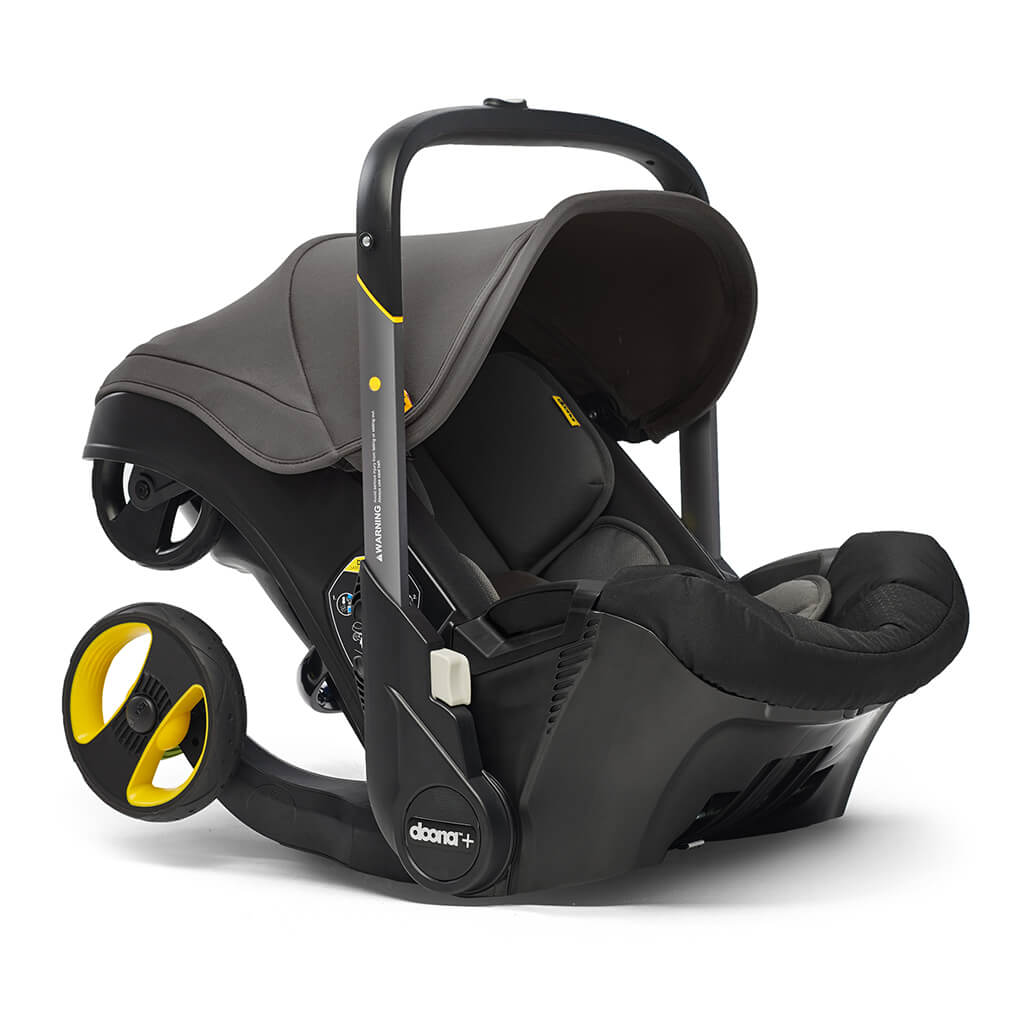
Proper maintenance and care of the Doona car seat ensure its longevity and performance. Regular upkeep will help in maintaining safety standards and keeping the seat looking its best.
Cleaning and Material Durability
Regular cleaning is essential to ensure the Doona car seat maintains its structural integrity and aesthetic appeal. The seat's materials are designed to withstand various conditions, but consistent care can prolong its lifespan.
- Fabric Cleaning: The fabric components can be removed for washing. It is recommended to follow the manufacturer's instructions for cleaning to prevent any damage.
- Stain Removal: For stubborn stains, a mild detergent can be used, applied with a soft cloth. Avoid harsh chemicals that may compromise the fabric's integrity.
- Surface Wipes: Regularly wiping down plastic and metal parts with a damp cloth helps in removing dirt and grime. This also maintains a clean environment for the child.
- Drying: After washing, allow all components to air dry completely before reassembling to prevent any mold or mildew buildup.
Routine Safety Checks
Conducting routine safety checks is vital for ensuring that the Doona car seat continues to function safely and effectively for your child. Regular inspections can help identify potential issues before they affect safety.
- Harness System: Inspect the harness for frays or wear. The five-point harness should be tight and secure, offering proper protection during use.
- Base and Connection Points: Check that the connection points where the car seat attaches to the car or stroller are secure. Ensure that there are no cracks or damage to these components.
- Integrity of the Seat Shell: Regularly examine the seat shell for any signs of damage, such as dents or cracks. If any are found, it may be necessary to replace the seat.
- Reassemble Properly: After cleaning, ensure all components are reassembled correctly according to the manufacturer's guidelines to maintain the seat's safety features.
The cost versus benefit analysis of the Doona car seat evaluates its pricing in relation to the features it offers and the long-term value it provides to parents.
Cost vs. Benefit Analysis
Pricing Compared to Features
The Doona car seat is often viewed as a premium product in the market. This is mainly due to its dual functionality as both an infant car seat and a stroller, which appeals to urban parents who require convenience and versatility. However, the price point raises questions about its value relative to its features.
- Initial Investment: The Doona car seat typically costs more than traditional infant car seats. Parents must weigh this initial investment against the expected benefits of its unique features.
- Feature Set: The Doona includes several notable features, such as a five-point harness system, anti-rebound bar, and infant head support. These enhancements contribute to its safety ratings and usability.
- Store Convenience: The ease of transitioning from car seat to stroller can be advantageous for parents constantly on the go. This feature can justify the higher price for families that frequently travel or navigate busy environments.
Long-Term Value for Parents
Evaluating the long-term value of the Doona car seat involves considering its durability, usability over time, and potential savings associated with not needing a separate stroller.
- Durability: The construction quality and materials used in the Doona are designed to withstand daily use. Proper maintenance can extend its lifespan, making it a worthwhile investment.
- Single Product Use: By combining two products into one, parents can avoid the costs associated with purchasing a separate stroller. This feature can be economically significant, especially for families on a budget.
- Resale Value: Brands like Doona often retain their value better than other infant car seats. Reselling the Doona once the child outgrows it can recoup some of the initial investment, offering additional financial benefits.
Frequently Asked Questions (FAQs)
In this section, common questions regarding the Doona car seat are addressed, providing essential information that parents may seek.
How to Install the Doona Car Seat
Installing the Doona car seat correctly is crucial for ensuring the safety of the child. The installation process can vary slightly depending on the method chosen: LATCH, vehicle seat belt, or baseless.
- LATCH Installation:
The Doona can be installed using the LATCH system, which includes lower anchors and tethers. To begin, ensure that the anchors are accessible in your vehicle and securely fasten the Doona to these anchors. It is important to follow the seat's manual closely to ensure that the installation meets safety guidelines.
- Vehicle Seat Belt Installation:
This method involves securing the Doona using the car’s seat belt. Begin by placing the car seat in the desired position and threading the seat belt through the car seat's designated path. It is important to lock the seat belt properly to prevent movement. A checklist provided in the instruction manual can be helpful during this process.
- Baseless Installation:
The Doona offers the flexibility to be installed without a base. This method is particularly useful in scenarios involving rideshare or taxi services. Placing the car seat on the vehicle’s seat and securing it with the seat belt requires careful attention to positioning to ensure safety.
Safety Certifications and Standards
The Doona car seat complies with federal safety standards set for child restraint systems. These standards are designed to ensure that the car seat meets minimum safety requirements in the event of a crash. Various independent agencies periodically test car seats for their performance under simulated crash conditions.
Although the Doona meets these federal requirements, safety experts encourage parents to conduct thorough research on crash test ratings and to consider models that have consistently performed well in safety tests.
Common Issues and Troubleshooting
Parents may encounter a few common issues while using the Doona car seat. Understanding these can aid in effective troubleshooting.
- Installation Difficulties:
As mentioned, the installation process can sometimes be challenging. If improper installation is suspected, re-check each step to ensure that the car seat is securely fastened.
- Adjustment of Harness Straps:
Parents often find that adjusting the five-point harness can be tricky. It is important to ensure that the straps fit snugly against the child’s shoulders and that the chest clip is positioned at armpit level.
- Storage Constraints:
The Doona lacks significant storage space when in stroller mode. For parents requiring additional room for bags or other items, considering additional accessories for storage may be necessary.
Expert Tips for Safe Travel
When it comes to ensuring the safety of infants during travel, expert advice is invaluable. Knowledgeable tips on installation techniques and infant safety can help make every journey smoother and more secure.
Correct Installation Techniques
To maximize safety, proper installation of the car seat is crucial. Here are some essential techniques to consider:
- Always read the manufacturer's instructions thoroughly before attempting installation. Understanding the specific features and guidelines of the Doona car seat ensures a secure fit.
- Utilize the LATCH system if possible, as it allows for a more straightforward and easier installation process. Ensure that the LATCH connectors are tightly strapped to the vehicle’s anchors.
- For seat belt installations, run the lap and shoulder belt through the designated paths indicated in the manual. Ensure the seat belt is properly locked to prevent any slippage.
- Check the angle of the car seat. The Doona is designed for optimal placement, so using a leveling feature or guide, if available, is important to keep the infant’s head positioned correctly.
- After installation, always pull and tug on the car seat to test its stability. The seat should not move more than an inch in any direction. If there’s excessive movement, adjustments need to be made.
Ensuring Maximum Infant Safety
Aside from correct installation, keeping infants safe during travel encompasses several factors. Below are some expert insights on ensuring maximum infant safety.
- Utilize the five-point harness system correctly. Make sure the harness straps are snug but comfortable against the child’s body. The chest clip should be positioned at armpit level to keep the infant securely in place.
- Regularly check for harness adjustments as infants grow. It’s essential to adjust the harness to fit snugly as the child’s size changes to maintain effectiveness during travel.
- Incorporate necessary safety accessories, such as sunshades or head support cushions, depending on the infant’s age and comfort needs. These additions can enhance protection and comfort.
- Understand the limitations and guidelines for the Doona car seat, including weight and height limits, to ensure safe usage. Exceeding these limits can increase the risk of injury during travel.
- Conduct routine checks of the car seat’s components to ensure no wear or damage affects its performance. Regular maintenance helps maintain safety standards over time.
Alternative Uses and Adaptability
The Doona car seat's design accommodates various needs, making it a versatile product for families. Its capability to transition between functionalities extends beyond infancy, providing adaptable solutions for growing families.
Beyond Infancy: Extended Use Cases
The Doona car seat is not only practical for newborns but can also serve older infants and toddlers up to a certain weight limit. Many parents find the following extended uses particularly beneficial:
- Traveling Convenience: As children grow, they still require secure transportation. The Doona remains a useful option for travel, whether by car, taxi, or plane.
- Shopping Trips: Its dual functionality is excellent for quick errands. When navigating stores, parents can seamlessly transition from carrying their child to using the stroller feature.
- Daycare Drop-off: The Doona simplifies drop-off times at daycare. Parents can easily manage their little ones and their belongings in one device.
Adapting to Family Growth and Needs
As families expand, the ability to adapt a car seat to various situations becomes crucial. The Doona is designed to evolve with family dynamics:
- Multiple Children: For families with more than one child, the Doona can be a lifesaver. It provides a convenient way to transport a younger child while accommodating older siblings.
- Changing Needs: Some families might find that their lifestyle changes over the years, whether through relocation or altering daily routines. The Doona's easy adaptability makes it a staple that aligns with shifting family requirements.
- Urban Living: In dense urban environments, where space is often limited, the Doona’s compact design and ease of use facilitate a family's ability to navigate crowded areas with ease.
